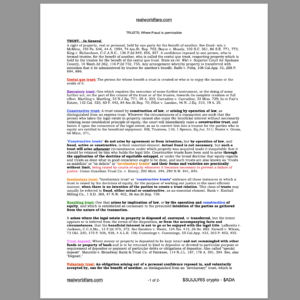What is a Court Appearance?
A “court appearance” refers to a party’s formal engagement with a case, either in person, through legal representation, or in written filings. The nature and scope of an appearance can vary, ranging from full participation in all aspects of the case to narrowly tailored engagements for specific purposes.
Types of Court Appearances and Their Implications
| Type | Purpose | Jurisdictional Effect | Scope of Engagement |
|---|---|---|---|
| General Appearance | Full participation in the case. | Submits to jurisdiction. | Broad engagement in all case matters. |
| Special Appearance | Challenge jurisdiction without broader participation. | Avoids submission to jurisdiction. | Limited to contesting jurisdiction. |
| Special Limited Appearance | Engage on specific procedural grounds (e.g., improper service). | Avoids submission to jurisdiction. | Strictly limited to the specified purpose. |
| Conditional Appearance | Preserve the right to challenge jurisdiction while engaging on other matters. | Reserves rights to later object. | Broader than special limited but still cautious. |
General Appearance
A general appearance occurs when a party voluntarily participates in the case and engages with its merits. By doing so, the party effectively submits to the court’s jurisdiction over both their person and the subject matter. Actions constituting a general appearance include:
- Filing an answer to the complaint.
- Engaging in discovery or motions unrelated to jurisdictional issues.
- Requesting relief from the court.
Key Risk: Once a general appearance is made, the party forfeits the right to contest the court’s jurisdiction.
Special Appearance
A special appearance allows a party to challenge the court’s jurisdiction without submitting to its authority. This type of appearance is often used to:
- Contest personal or subject matter jurisdiction.
- Challenge improper service of process.
In jurisdictions that recognize this distinction, a special appearance ensures that the party is not deemed to have consented to the court’s authority merely by appearing.
Special Limited Appearance: A Strategic Tool
A special limited appearance refines the concept of a special appearance, allowing a party to engage with the court on a narrow, predefined issue without waiving their jurisdictional objections.
Key Features:
- Preservation of Rights:
- The appearance is explicitly limited to a specific purpose, such as challenging jurisdiction or seeking dismissal based on procedural grounds.
- Avoidance of Waiver:
- By clearly limiting the scope, the party does not risk waiving objections to jurisdiction or other rights.
- Limited Engagement:
- The party does not engage with the merits of the case or broader issues, such as filing an answer or participating in discovery.
Practical Applications:
- Filing a motion to quash improper service of process.
- Challenging personal jurisdiction due to insufficient contacts with the forum state.
- Seeking dismissal based on procedural defects, such as lack of standing.
Conditional Appearance
A conditional appearance is made when a party participates in the case while reserving the right to challenge jurisdiction or other foundational issues at a later time. It strikes a middle ground between special and general appearances, allowing limited participation without outright submission to jurisdiction.
Key Example:
A defendant might file an answer to a complaint but include language reserving their right to challenge personal jurisdiction later.
Pro Se vs. In Propria Persona in Appearances
- Pro Se: Individuals representing themselves (pro se) may inadvertently make a general appearance due to lack of knowledge about the nuances of special or limited appearances.
- In Propria Persona: A party acting “sui juris” or “in propria persona” (in their own right) may use special limited appearances more strategically to preserve their sovereignty and avoid waiving jurisdictional objections.
Strategic Considerations for Special Limited Appearances
- Clearly Define the Scope:
Ensure all filings explicitly state that the appearance is “special and limited” to the issue being addressed. - Avoid Broader Engagement:
Participating in unrelated aspects of the case can transform the special limited appearance into a general one, waiving jurisdictional objections. - Local Rules:
Some jurisdictions no longer distinguish between special and general appearances, making it essential to check local rules and procedures.
Conclusion
Understanding the distinctions between general, special, conditional, and special limited appearances is critical for preserving rights and jurisdictional objections. Among these, special limited appearance is particularly valuable for addressing specific procedural issues without submitting to the court’s full authority. Properly executed, it allows parties to engage with the court on their own terms, ensuring their rights remain intact.












